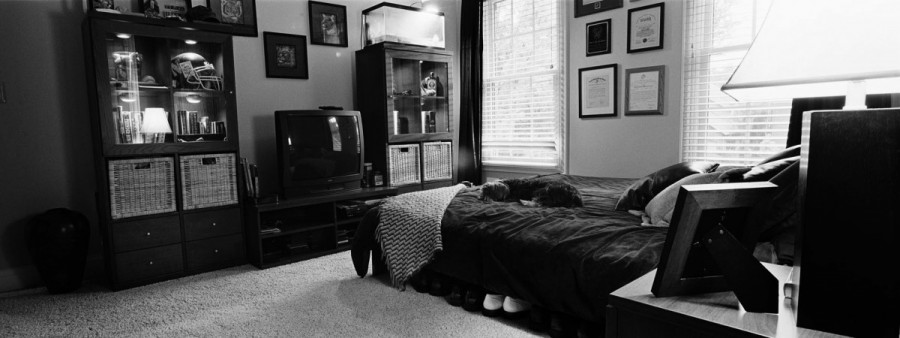‘This is What War Looks Like’
Photojournalist Examines the Real Costs of Afghanistan and Iraq
For most of the families that lose a loved one to war, one of the only physical memories that remains is an empty bedroom.
In that space, these people were not just soldiers; they were brothers, sisters, sons and daughters. Thousands of miles from where they died, the fallen left behind a monument to the lives they lived and the people they were.
For most of the families that lose a loved one to war, one of the only physical memories that remains is an empty bedroom. In that space, these people were not just soldiers; they were brothers, sisters, sons and daughters. Thousands of miles from where they died, the fallen left behind a monument to the lives they lived and the people they were.
For over three years, photojournalist Ashley Gilbertson has stepped into empty rooms in North America and Europe to commemorate the lives of those who died fighting in Iraq and Afghanistan. And while Gilbertson’s previous work brought him to the front lines of conflicts in Afghanistan, Iraq and Papua New Guinea, he says he has never felt closer to war then when he stands in the bedroom of a dead veteran.
“This is what war looks like,” said Gilbertson of his project, called Bedrooms of the Fallen. “When we declare war—whether it’s an invasion, whether it’s a war of liberation or whatever you want to call it—people die. And, unfortunately, that’s often overlooked.”
Journalists embedded within platoons in Iraq and Afghanistan are bound by strict censorship policies. Since photographing the dead is forbidden, Gilbertson says the wars are easily and intentionally dehumanized.
“It’s difficult for a country to be at war if the war is personalized,” he said. “That’s what these photos do; they personalize the war. People aren’t engaging anymore when you say that Private Jones was killed while fighting in Kandahar. It’s a guy in his uniform, in a foreign country—it’s very hard to relate to. When people look at Bedrooms of the Fallen, they realize that it’s someone’s child that died and all of a sudden it becomes very real. This is what the end of war truly looks like. I don’t think that’s possible with standard war photography.”
After experiencing the horrors of armed conflict for over a decade, Gilbertson wanted to address what he had learned about war. In 2007, Gilberston spent a month visiting a veterans’ cemetery in Washington D.C. Towards the end of his stay, Gilbertson’s wife Joanna turned to him and suggested he start photographing the bedrooms of dead soldiers.
“It was perfect,” he said. “It addresses the absence, it addresses the grief, it addresses that deep longing to see this person again but it also gives you an idea of who they were.”
Later that year, Gilbertson travelled to the home of Thomas Gilbert, a 24-year-old Marine killed in Fallujah in 2006. After meeting the Gilbert family on four separate occasions, Gilbertson finally entered Gilbert’s room, which remained unchanged from when he was alive.
“I was floored by being in that space,” said Gilbertson. “His family was still very fragile and it took a long time for them to trust me and for me to feel comfortable.”
Using the white pages, veterans’ memorial websites and Facebook, Gilbertson began reaching out to more of the families of slain soldiers. Each time, he would spend hours or days with these families, learning about their grief and the life they mourn.
“I feel like I can’t photograph this person’s room without some understanding of who this person was and what he or she meant to the family,” said Gilbertson. “It’s been amazing and awful. To give you an idea, some of these families keep the rooms intact for seven years. You learn what these people loved, what their most intimate space was like. Then you realize they died 5,000 miles from where you’re standing and that news came back to this space, to this family. It never gets routine— it’s devastating every time.”
For the families Gilbertson visits, there is no escaping the thought of their dead relatives. The fallen live on through memories which can be both haunting and joyful. Gilbertson’s project, which he is turning into a book of photography, helps preserve these memories, but also serves as a stark reminder of the void created by war.
“For these people, the first thing they think of when they wake up everyday is their child, who is dead. They are reminded of this throughout their day every time they look at a playground or some street sign or a McDonald’s the family used to get drive-thru meals at,” said Gilbertson. “And the last thing they think of before they go to sleep is that dead child. That’s war.”
This article originally appeared in Volume 31, Issue 24, published March 7, 2011.


_600_832_s.png)
